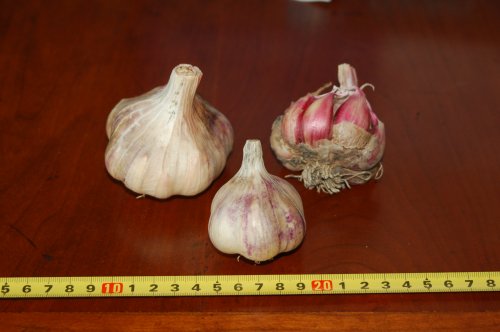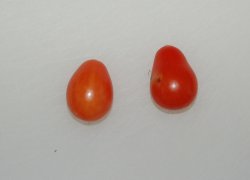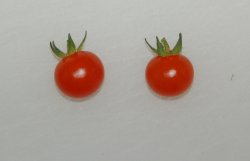
This garlic is an Artichoke type.
I’ve been slowly working my way through the garlic I’ve harvested over the last month or so. I’m not going to make separate posts of all the garlic I grew, but I thought I would point out what I think are some of the more interesting ones.
It’s my habit not to clean the bulbs until they have cured, so while many other people have been posting pictures of their cleaned garlic, I haven’t had any to take pictures of until now. I find if I clean harvested garlic with water, it risks making the bulb wetter and the curing process more difficult.
My garlic was wet enough this year when it came out of the ground! It was a very wet year here. About 1 in 20 bulbs formed single cloves, and many fell victim to rotting or mildew. Not a great year for growing garlic!
Anyway, Red Toch is a variety from the former Soviet republic of Georgia. Toch is short for Tochliavri, the name of a city. Many really outstanding garlics come from Georgia!
The Seed Savers Exchange reports this is the most commonly requested variety by it’s members.
I like this variety very much, and it grows very well in my garden. It is a good all purpose garlic. The one major drawback is it has one of the shortest storage life of all the varieties I grow, so I have to make sure I eat it first.
The bulb on the right began to open in the ground, exposing the cloves.




